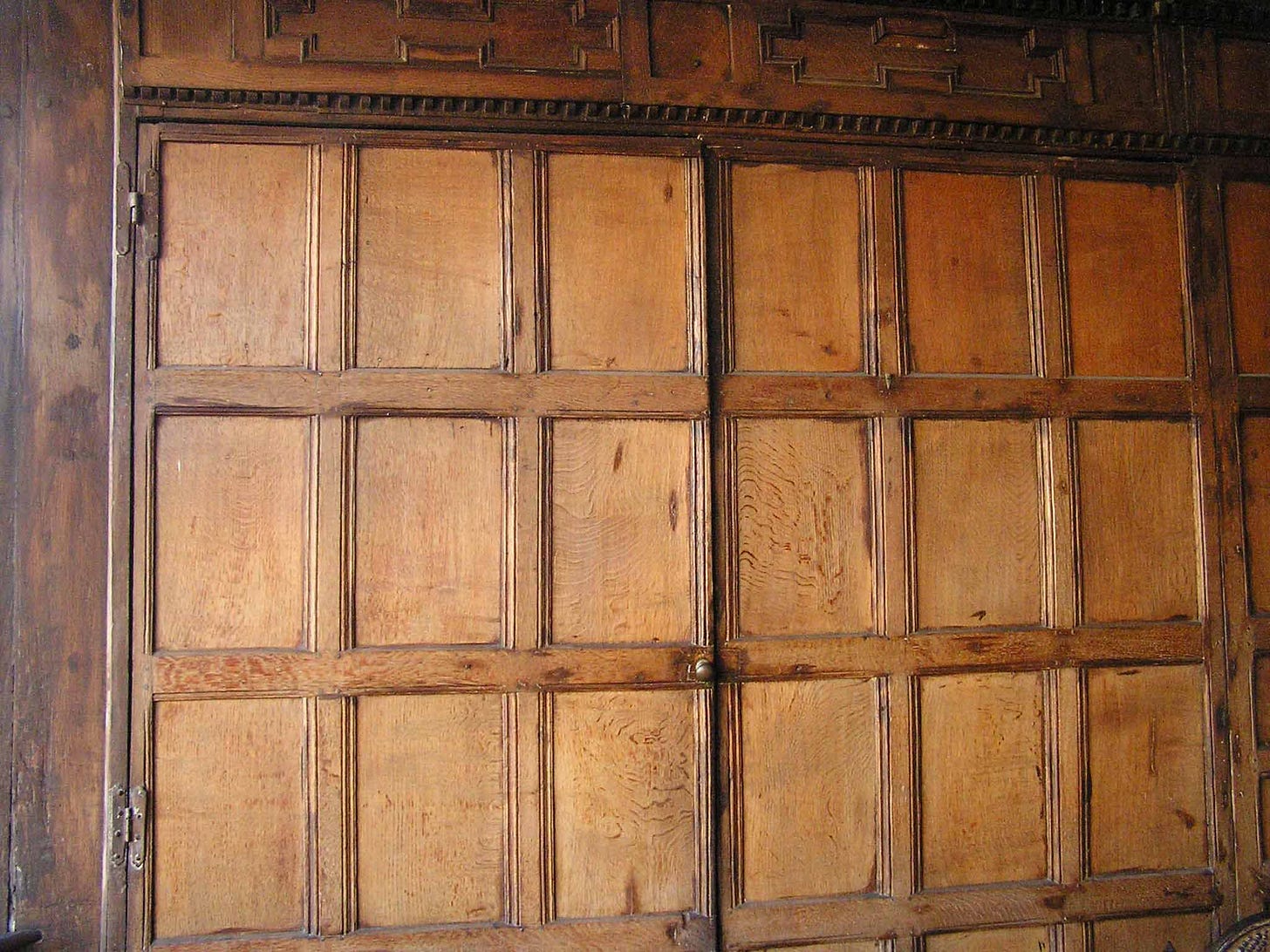Last week I wrote about wainscot chairs and made a passing reference to the term wainscot, saying I’d get back to it. Here we are. A word we think we know today, but one with many meanings in 17th century England and New England. I’ll take a look at some of the uses of this word. Hang on, there’s a lot to it. The first exposure I had to it in research was probably the way I was using it last week - as an adjective, “wainscot chair” or “wainscot chest” - spelling didn’t count in the period so you might see it spelled many different ways in documents from that time. In 1662 a Salem, Massachusetts inventory included a “wenscot chest & a plaine chest” valued at 14 shillings.
OK so it’s an adjective. It’s also a noun - we see it in documents like wills and probate inventories, citing the “wainscot” in a room. And, for Megan F., the most famous citation of it - in Shakespeare’s As You Like It:
“This fellow wil but ioyne you together, as they ioyne Wainscot, then one of you wil proue a shrunke pannell.”
Some typical wainscoting in a room in the Merchant’s House in Salisbury, Wiltshire:
From this it is clear that we’re talking about the wall covering in the form of frame-and-panel construction. Joseph Moxon’s Mechanick Exercises describes the proportioning of wainscoting a room in his section on joinery. (Whoops, now it’s a verb...)
Of Wainscoting Rooms
AA A ( in Plate 7) The Stiles. B The Base, G The Lower Rail. D The Sur Base. E E The Middle Rail, or Rails. F The Friese Rail. G The Upper Rail. H The Cornice. I The Lying Pan nel. K The Large Pannel. L The Friese Pannel.
In Wainscoting of Rooms there is, for the most part, but two heights of Pannels used; unless the Room to be Wainscoting be above ten foot high, as some are eleven or twelve Foot high, and then three Heighths of Pannels are used: As I The Lying Pannel, above the Base. K The Large Pannel above the Middle Rail: And L The Friese Pannel above the Friese Rail.
The Friese Rail is to have the same breadth the Margent of the Stile hath; The Middle Rail hath commonly two breadths of the Margent of the Stile, viz. one breadth above the Sur base, and the other below the Sur base. And the Upper and Lower Rails have also each the same breadth with the Margent of the Stile.
Those Moldings above the Prickt Line on the Top, as H, are called the Cornice.
Sometimes (and especially in low Rooms) there is no Base or Sur base used, and then the Middle and Lower Rail need not be so broad: For the Middle Rail need not be above a third part more than the Margent of the Rail: and the Lower Rail you may make of what breadth you see convenient: They are commonly about three Inches and an half, or four Inches broad, yet this is no Rule: For sometimes Workmen make only a flat Plinth serve.
You may (if you will) adorn the outer edges of the Stiles and Rails with a small Molding: And you may (if you will) Bevil away the outer edges of the Pannels; and leave a Table in the middle of the Pannel.
The “table” in the middle of the panel is what we would call a “raised panel.” Just for those keeping score at home.
But wainscot is also the material used to make wainscot - or a wainscot chair/chest, etc. There’s a great many examples in English records that mention wainscot being imported into the country as material, not the finished works. An early 16th-century reference I ran across way back when, reading Wolsey & Luff’s book Furniture in England: The Age of the Joiner, an excerpt from the will of John Henryson of Kingston-upon-Hull:
I gif to William Henryson, the carver, at the next comying of the hulkes oute of Danske a c [hundred] wayne scottes
Keep reading with a 7-day free trial
Subscribe to Follansbee's Substack to keep reading this post and get 7 days of free access to the full post archives.





